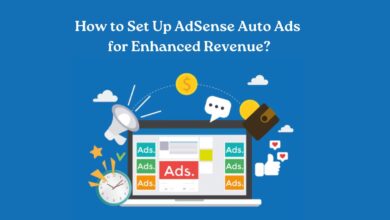Using Google Analytics to Analyze Ad Performance on Your Website

In today’s hyper-competitive digital landscape, understanding the intricacies of ad performance is pivotal for businesses striving to maximize their online presence and revenue. Enter Google Analytics, the quintessential tool for delving into the depths of ad performance analysis. This article serves as a comprehensive guide to harnessing Google Analytics effectively, exploring key metrics and providing detailed steps on how to optimize ad campaigns for unparalleled success.
Unlocking Key Metrics:
At the heart of Google Analytics lies a treasure trove of metrics that illuminate the performance of your ads. Let’s explore some of the most crucial ones:
1. Click-Through Rate (CTR):
A fundamental metric, CTR measures the percentage of users who click on your ads after viewing them. A high CTR signifies compelling ad copy and relevance to your target audience.
2. Conversion Rate:
This metric quantifies the percentage of ad clicks that result in desired actions, such as purchases, sign-ups, or downloads. It serves as a barometer of ad effectiveness in driving meaningful engagement and conversions.
3. Bounce Rate:
The bounce rate shows the percentage or fraction of site visitors who leave your website after checking or viewing one page. A high bounce rate may signal mismatched expectations or a poor user experience, necessitating optimization efforts.
4. Average Session Duration:
This metric tracks the average duration of user sessions initiated by ad clicks. A longer session duration typically correlates with higher engagement levels and interest in your content or offerings.
Step-by-Step Guide to Ad Performance Analysis:
Now, let’s delve into a detailed step-by-step approach to leveraging Google Analytics for analyzing ad performance on your website:
1. Set Up Google Analytics:
Begin by creating a Google Analytics account and installing the tracking code on your website. This code is essential for collecting data on user interactions, including ad clicks and conversions.
2. Link Advertising Platforms:
Establish seamless integration between Google Analytics and your advertising platforms, such as Google Ads or Facebook Ads. Linking accounts ensures accurate tracking of ad performance metrics and attribution of conversions to specific campaigns.
3 Define Goals and Conversion Events:
Identify and define goals that align with your business objectives, such as completing purchases or filling out contact forms. Set up conversion events within Google Analytics to track these actions systematically.
4. Monitor Key Metrics:
Regularly monitor key performance indicators (KPIs) like CTR, conversion rate, bounce rate, and average session duration. Analyze trends and fluctuations in these metrics to gauge the effectiveness of your ad campaigns.
5. Segment Data for Insights:
Utilize Google Analytics’ segmentation capabilities to dissect data based on demographics, geographic location, device type, and more. Segmenting data unveils nuanced insights into audience behavior and enables targeted optimization strategies.
6. Conduct A/B Testing:
Experiment with different ad creatives, messaging, and targeting parameters through A/B testing. Compare the performance of multiple ad variations to identify winning combinations that resonate best with your audience.
7. Optimize Continuously:
Armed with insights from Google Analytics, iteratively optimize your ad campaigns. Fine-tune targeting, ad copy, and landing page experiences based on data-driven findings to maximize ROI and drive sustained success.
In conclusion, Google Analytics serves as an indispensable ally in the quest for ad performance optimization. By understanding key metrics, following a structured analysis process, and embracing continuous optimization, businesses can unlock the full potential of their advertising efforts and propel growth in the digital realm.
Explore www.intogeeks.com for more information about Google Analytics.




